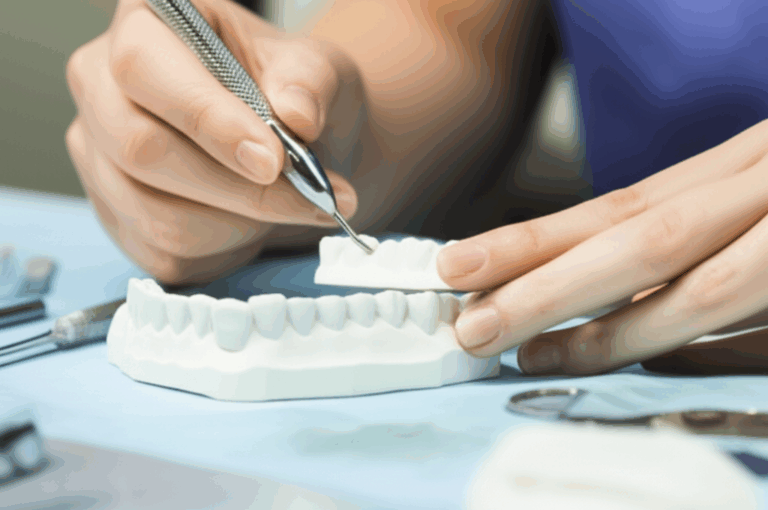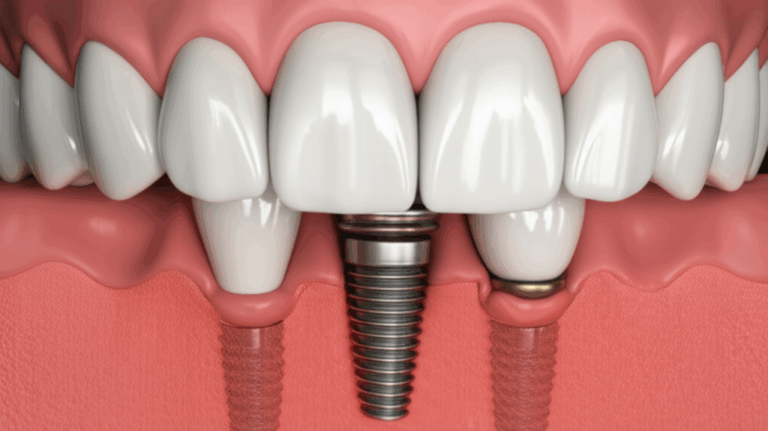
What Is a Sliding Scale Dental Clinic? My Personal Guide to Affordable Oral Health
Table of Contents
Introduction: How I Discovered Sliding Scale Dental Clinics
Tooth pain started sneaking into my daily life, and my jaw ached every time I tried to eat toast. The problem? Like a lot of folks, I didn’t have dental insurance, and every price I saw for care was scary—hundreds or even thousands of dollars for stuff like a checkup, filling, or cleaning.
When a friend told me about “sliding scale dental clinics,” I had no idea these places were out there. I thought cheap dental care was just for people who had Medicaid (which I didn’t qualify for) or weird coupon clubs. Turns out, I was missing something really important. Over time, I went to sliding scale clinics myself and helped others in my community get the treatment they needed. Now, I want to walk you through everything I figured out—warts and all.
Understanding Sliding Scale Dental Clinics: The Basics
“Sliding scale dental clinic” might sound complicated, but it’s not. In my experience, these clinics let you pay what you can based on how much money you make and how many people live in your house. The less you earn, the less you pay. That’s why it’s called a “sliding scale”—the price slides up or down depending on how much you make.
Most of these clinics aren’t really in it to make a lot of cash. They’re run by local health centers, government health centers (called FQHCs), or non-profit groups—folks who want everyone to have a fair shot at taking care of their teeth. The best thing for me (with no insurance) was the staff treated me like a real person, not just about whether or not I could pay.
How Does a Sliding Scale Fee Program Actually Work?
I wondered how they decided what to charge me, and it turns out it’s not just picked out of thin air. Clinics look at your income and the number of people in your house to figure out what’s fair for you. Usually, they check something called the Federal Poverty Level (FPL).
Here’s what happened with me: I brought in my pay stub and my last tax return. They compared what I earned to the government rules. Since I made just over the poverty line, I got about 60% off. If you don’t have any income or you get benefits like unemployment or social security, you could get an even bigger discount.
These clinics are usually not totally free (unless you really have nothing), but the prices are much better—sometimes capping a whole checkup, cleaning, and x-rays at about $30–$60. Things like fillings, tooth pulling, or dentures also cost way less than the normal price at a regular dentist.
The reason they can do this is because of government money, what patients pay, and help from the community—not because they give worse care.
Who Really Qualifies? My Experience with Eligibility
This is what I had to do to get approved:
1. Proof of Income
The clinic wanted a recent pay stub, last year’s W2, or tax return. If I had no job or got social security, I could bring those letters. Even folks with jobs that change a lot (like side gigs) could bring bank statements or a note from a boss.
2. Household Size
They wanted to know who lives with you—kids, parents, roommates—even if they weren’t going to the dentist. That way, your discount is fair if you have people to support.
3. Who Comes In?
Most patients I saw had no dental insurance, not enough money, or were in tough spots. I met older people, veterans, hardworking families barely making it, new immigrants, and folks without homes all getting help.
4. Easy Application
It wasn’t piles of forms, and the staff helped me fill out what I forgot. I was a bit embarrassed at first, but really, everyone wanted me to get care. If you’re scared of this part, just remember—they want you to get better.
Key Benefits I Noticed When Choosing a Sliding Scale Clinic
Thinking back, here’s why sliding scale clinics worked out great for me:
Big Cost Savings
My teeth needed help: a regular cleaning, two fillings, and x-rays. At a private dentist, I would’ve paid well over $500. At my sliding scale clinic? About $110 total. For a lot of people I know, that made it possible to go to the dentist for the first time in years.
No Insurance Needed
After I lost my job, I didn’t have any coverage—too much money for Medicaid, not enough for my own plan. At the sliding scale clinic, nobody cared about my insurance—they showed me every way to get help with the bill.
Good and Friendly Staff
Some people think these places have bad dentists or students. That wasn’t true. My dentist was fully trained and explained everything. My hygienist knew how to help people who were nervous.
Lots of Services
I could get most of what a regular dentist offers, like cleanings, checkups, fillings, pulling teeth, root canals, crowns, and sometimes dentures or bridges. (Fancy things like braces weren’t usually there, but the clinic could give me a referral.)
Other Health Help
Many sliding scale clinics are in big health centers. I could also get a quick physical or a flu shot on the same day. This made it easy to take care of my health all at once.
Types of Dental Services Typically Offered
Here’s a quick list of what I saw at my local sliding scale clinic, and what you can usually expect:
Keeping Teeth Healthy
- Teeth cleanings and checkups
- X-rays and fluoride treatments
- Sealants (for kids and grown-ups)
- Simple advice for taking care of teeth—I still follow their tips
Basic and Fixing Work
- Fillings for cavities
- Simple tooth pulling (they did a lot for people in pain)
- Root canals and crowns (at some clinics)
- Bridges, dentures, or other false teeth (not always fancy, but did the job)
Emergencies
That painful tooth that kept me up all night? The clinic squeezed me in and stopped the pain. They saved spots for walk-ins who really needed help, which was a huge relief.
Dental Education
Every time I visited, they let me know what was happening and why. Sometimes I got handouts on brushing, best foods, and how to take care at home. This wasn’t just “get in, get out”; they wanted me to know how to stay healthy.
If you’re curious about the materials used in fillings or crowns, like zirconia dental lab products, you usually find the basic stuff at these clinics, but can ask for more info or referrals for special jobs.
How I Found a Sliding Scale Dental Clinic Near Me
When I was looking for a place, I just used Google. Typing “sliding scale dentist near me” or “community dental clinic [my city]” pulled up a few names. Here’s what else helps:
1. HRSA’s Find a Health Center Tool
There’s a government website that lets you search by ZIP code for local clinics or centers with sliding scale dental care.
2. Local and State Health Websites
My county health department listed safety-net clinics, with their address and what they offer.
3. Non-Profits and Community Groups
I asked at the library and community center. Some groups also helped set up rides for people who can’t travel far.
4. Phone Calls
Don’t be nervous—call clinics and ask, “Do you have a sliding scale or discount?” Some places didn’t say so online but did when I called.
If you want cheap dentures or more advanced stuff, some dentists work with removable denture labs to help refer people who need it.
Getting Ready for My First Visit: What I Learned the Hard Way
Here’s what I wish I’d done before my first visit:
1. Bring Your Paperwork
W2s, pay stubs, tax return, benefit letters, ID, and a bill with your address—double check so you don’t miss something. I forgot my pay stub and almost had to rebook.
2. Write Down Questions
What’s included? What will it cost after the discount? How long is the wait for certain things? It’s easy to forget once you’re there.
3. Make a List of Your Health Stuff
All your medicines and big health problems. My dentist asked about diabetes and blood thinners—I wasn’t ready!
4. Be Ready to Wait
Sliding scale clinics get busy. Sometimes wait times were longer than a fancy dentist, especially for emergencies. Bring a book or music—it’s worth it for care you can afford.
Debunking Common Myths: What Surprised Me Most
To be honest, I believed some lies before I tried this. Maybe you do too. Here’s what I found out:
- Myth 1: Sliding scale clinics are free.
Not usually. They charge less or a small fee, unless you have no income at all.
- Myth 2: The dentists are bad.
That’s not what I saw. The dentists and hygienists were trained and cared. Everything looked clean, and they followed all the safety rules.
- Myth 3: They only handle emergencies.
They love prevention—cleanings, sealants, advice. They do emergencies, but not just that.
- Myth 4: Getting approved is hard and embarrassing.
Sure, showing your paperwork isn’t fun. But the staff made it easy, and I got respect.
Statistics and Real World Impact
Let’s look at a few numbers that show why these clinics matter.
- Over 30 million Americans use community health centers (FQHCs)—and almost all use a sliding scale for dental and other care.
- About 70% of FQHCs offer dental care.
- The National Association of Community Health Centers says over 28 million people go to 10,000+ clinics across the country.
- 40% of adults say they skip or wait on dental care because of money.
- The problem is even bigger for people making less than $25,000 a year.
- Folks using sliding scale clinics are 15–20% less likely to end up in the hospital for stuff that could have been stopped—showing these places help everyone, not just one person.
- These clinics mostly help people without much money, or who can’t get regular insurance, including a lot of minority groups.
In my mind, these aren’t just numbers—they’re real people who don’t end up in debt, kids who aren’t missing school from tooth pain, and older adults keeping their teeth and smiles.
Final Thoughts: Why Sliding Scale Clinics Matter More Than Ever
I’ve had trouble with high dental bills, and I know how stuck you feel when you can’t pay for care. Sliding scale dental clinics aren’t just a backup—they help people actually feel better, and stop little problems before they get expensive and big.
If you remember one thing from my story, let it be this: Don’t let worry about money keep you from smiling. Cheaper dental care is possible. With a little looking and some guts, you’ll find a clinic that works for you, treats you right, and makes you feel welcome.
If you want to learn about more advanced treatments someday, like crowns and bridges or dental implants, just ask your clinic for info or a referral.
Your teeth matter. So do you.
Further resources:
Need to learn about dental problems or thinking about dental implants down the road? Good clinics will answer your questions or send you somewhere that can help.
This guide comes from my own story and what I’ve seen others go through. If you’re worried about your teeth, please—take that first step and contact a sliding scale dental clinic near you. You’ll be glad you did.








